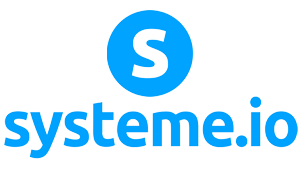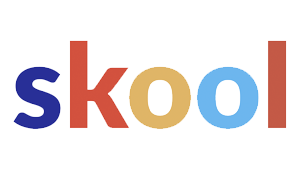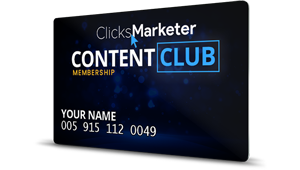Bing Places for Business is Microsoft’s free platform that lets companies manage how they appear in Bing search results and on Bing Maps. A listing ensures that accurate business details, such as location, hours, and contact information, are visible to anyone searching on Bing.
This visibility helps potential customers find and connect with a business quickly.

In 2025, Bing still holds a solid chunk of search traffic, especially because it’s baked right into Microsoft products and devices. Companies that actually spend time setting up and maintaining a Bing Places profile are much more likely to get noticed by this audience.
Ignoring Bing? You’re probably missing out on a steady trickle of potential customers.
Beyond basic visibility, Bing Places has tools to boost engagement, show off services, and build trust. Keeping your info up to date and squeezing the most out of your profile helps you stand out in local search results and beefs up your digital presence.
What Is Bing Places for Business?

Bing Places for Business is a free tool that lets local businesses control how they show up in Bing search and Bing Maps. You get to manage your business details, boost your visibility, and tap directly into Microsoft services used by millions.
Key Features of Bing Places
You can create and verify a business listing with the basics—name, address, phone, website, and hours. Once verified, your info pops up in Bing search and Maps, so customers get the right details.
Businesses can upload photos, add categories, and highlight services. These extras help your listing pop and give people a better idea of what you’re all about.
If you’ve got multiple locations, Bing Places supports bulk uploads. That’s a massive time saver and keeps your info consistent everywhere.
You can also check out some basic insights, like how often your listing shows up in search. It’s not the fanciest analytics, but it’s enough to see if you’re getting noticed.
How Bing Places Differs from Google Business Profile
Bing Places and Google Business Profile (formerly Google My Business) are both about managing your local online presence. But there are differences—reach, features, and how they fit into your workflow.
Google Business Profile dominates, sure, but Bing Places still reaches millions via Bing search and Maps. If you skip Bing, you’re leaving those users to your competitors.
Bing Places keeps things simple. Fewer bells and whistles than Google, but honestly, for a lot of small businesses, that’s a relief.
Verification is a bit different too. Bing Places lets you import data straight from Google Business Profile, so you don’t have to re-enter everything. That’s a nice shortcut for keeping your info lined up across both platforms.
Integration with the Microsoft Ecosystem
Bing Places plugs right into the Microsoft ecosystem—think Windows, Office, Outlook, and Cortana. So your business info gets seen across all kinds of Microsoft services.
For example, if someone searches with Windows Search or uses Bing Maps, your Bing Places data shows up. That’s extra visibility you might not expect.
Cortana, Microsoft’s digital assistant, also uses Bing data for local questions. If your business is verified, users get the right details when they ask for directions or hours.
Keeping your Bing Places listing updated means your info stays consistent across search, maps, and productivity tools—wherever Microsoft has a foothold.
Why Your Business Needs a Bing Places Listing in 2025

A Bing Places listing helps your business get found in search, connect with local customers, and compete in places where Google usually wins. It’s a great way to boost brand awareness, improve local SEO, and tap into Microsoft’s ecosystem without breaking the bank.
Expanding Online Visibility and Reach
A Bing Places listing gives you a verified spot in Bing search and Maps. That means your address, phone, and hours are easy to find and (hopefully) always correct.
Plenty of people use Bing-powered searches through Windows, Edge, or even Cortana. If you’re not listed, you’re invisible to all those users.
Key benefits include:
- Consistent business details across platforms
- Improved local SEO performance
- Greater search visibility in Bing’s ecosystem
Keeping your Bing business listing fresh helps you reach beyond Google and strengthen your digital marketing.
Accessing a Unique Audience on Bing
Bing’s crowd isn’t exactly the same as Google’s. There’s a bigger desktop user base, more older demographics, and a lot of enterprise folks.
If you’re on Bing Places, you get a shot at this unique audience.
People using Outlook, Office, or other Microsoft services often default to Bing for searches. That’s a lane you don’t want to ignore.
Some studies even say Bing users spend more. So, showing up in Bing search results could mean better conversion rates for your business.
A Bing listing also supports targeted marketing via Microsoft Advertising and Bing Ads, if you decide to go that route.
Lower Competition and Higher Local Search Rankings
Not as many businesses bother optimizing for Bing, so the competition is way lighter than on Google. That’s good news if you’re a small or mid-sized business looking for an edge.
A Bing Places listing boosts your odds of landing in the local pack for searches like “restaurants near me” or “plumbers in [city]”. That’s prime digital real estate.
Advantages of lower competition:
- Better shot at top rankings
- Less hassle to get noticed
- Stronger brand presence locally
If you’re after cost-effective ways to stand out in local search, Bing Places is worth a serious look.
Cost-Effective Marketing Opportunities
Setting up and maintaining a Bing Places listing costs you nothing. It’s a free way to improve your search visibility—no ongoing ad spend required.
You can also tie Bing Places into Microsoft Advertising and Bing Ads. That combo boosts both your organic and paid reach, so you meet customers at more touchpoints.
Even if you skip paid campaigns, a Bing listing helps your local SEO and keeps your brand in front of more eyeballs.
For businesses on a tight budget, Bing Places is a no-brainer for expanding your presence and picking up extra traffic with minimal effort.
Setting Up and Verifying Your Bing Places Listing
You’ll need to create or claim your profile, make sure your details are accurate, and verify your listing before it’s visible. Tools like syncing with Google Business Profile or bulk uploads make managing multiple locations a lot less painful.
Creating or Claiming Your Business Profile
First, you’ll need a Bing Places account. From there, you can create a new profile or claim an existing one Bing already has.
Claiming keeps you from ending up with duplicate listings and puts all your info under one roof.
You’ll enter your business name, address, phone, website, and hours. Double-check these—wrong info can hurt your visibility.
Don’t forget to upload photos of your storefront, logo, or products. Visuals matter, and people do notice.
Once you save, your listing hangs out in draft mode until you verify it.
Syncing with Google Business Profile
Bing Places lets you sync directly with Google Business Profile (GBP). This is a huge time-saver—your contact info, hours, and photos can be imported in a few clicks.
Syncing keeps your details consistent across platforms, which is good for both search engines and customer trust.
If you update something on GBP, Bing Places can update too. But heads up: syncing isn’t perfect. You’ll still need to check that everything lines up, since some categories on Google don’t match Bing’s exactly.
Bulk Upload and Managing Multiple Locations
Got multiple locations? Bing Places has a bulk upload tool. Just upload a spreadsheet with all your locations—addresses, phones, hours, the works.
This makes managing lots of listings way easier. Edit your spreadsheet, re-upload, and you’re good.
There’s also a dashboard to keep track of everything. You can see which locations are verified, tweak hours, or zap duplicates if they pop up.
It’s especially handy for franchises or regional businesses that need to keep dozens (or hundreds) of listings straight.
Verification Methods and Best Practices
To verify your listing, Bing offers a few options. Most folks get a postcard with a PIN, but sometimes you can verify by phone, email, or instantly if you’re already verified on GBP.
Verification proves your business is legit and that you’re authorized to manage the listing. If you skip this, your info won’t show up publicly.
Best practices? Make sure your address and contact info are spot-on before requesting verification. Don’t create a bunch of unverified listings—it just slows things down.
Keep some documentation handy (like utility bills or business licenses) in case Bing asks for extra proof.
Optimizing Your Bing Places Profile for Maximum Impact
A solid Bing Places profile makes your business look more credible and helps you show up in local searches. Accurate info, good photos, and consistency across directories all play a part in better local SEO.
Completing Business Details and Description
Start with the basics: business name, address, phone, website, hours, and category. Missing or outdated info erodes trust and messes with your rankings.
Your business description should be clear, specific, and sprinkled with relevant keywords. Tell people what you do, highlight your services, and don’t be afraid to get a little specific about what makes you different.
Use structured data—like categories and attributes—where you can. If you’re a restaurant, mention your cuisine, reservation options, and delivery. The more relevant details, the better your listing will show up.
High-Quality Photos and Visual Content
High-quality photos make a big difference. Listings with sharp, recent images get more clicks and calls.
Show off your storefront, your team, and your products or services. Don’t cheap out on image quality—blurry or outdated pics can actually turn people away.
Update your photos regularly. It signals that you’re active and paying attention.
Mix it up: logos, team shots, product close-ups. Bing Places even lets you pick a cover photo, which can set the tone for your whole listing.
NAP Consistency and Local SEO Strategies
NAP consistency (Name, Address, Phone) is huge for local SEO. Make sure your info matches everywhere—Bing, Google, social media, and any other directory you’re on.
Search engines get confused if your details don’t line up, and your rankings can take a hit.
Use keywords in your business description that match your services. Drop in city or neighborhood names to help with local search visibility.
Get listed in trusted directories and keep an eye on your reviews. Responding to feedback helps your credibility and can give your SEO a nice little bump.
Profile Optimization Tips
Don’t just fill in the basics and call it a day. Use every feature Bing Places offers—pick the best categories, add service areas, enable appointment links if you’ve got them.
Here’s a quick checklist:
- Accurate NAP details
- Detailed business description with keywords
- High-quality images (update often)
- Consistent categories and attributes
- Monitor and reply to reviews
Keep your profile fresh. If your hours change, you add a service, or it’s the holidays, update your listing right away.
Treat Bing Places like a living profile, not a “set it and forget it” thing.
Leveraging Bing Places for Enhanced Customer Engagement
Bing Places isn’t just about being found. You can use it to connect with customers, manage feedback, track performance, and even adapt to new tech like voice search.
These tools help you stay responsive, make better decisions, and keep your business visible on all the platforms that matter.
Managing Customer Reviews and Reputation
Reviews on Bing Places can make or break a first impression. Positive feedback builds trust; negative reviews left unchecked can scare people off.
Replying directly through the Bing Places dashboard shows you care and can sometimes turn a bad experience into a win.
Keep an eye out for patterns in your reviews:
- Positive mentions: maybe your service is top-notch—call that out.
- Negative mentions: if you’re hearing about long wait times, that’s something to fix.
Staying on top of reviews helps your reputation and encourages more happy customers to share their thoughts.
Utilizing Insights and Analytics
The Bing Places dashboard gives you data on customer actions—stuff like clicks for directions, phone calls, or website visits. These insights are a window into how folks interact with your listing and where you might want to tweak things.
Tracking metrics over time? That’s where things get interesting. If you notice profile views jump after swapping out your photos, it’s a pretty good hint that visuals matter more than you’d think.
Key performance indicators include:
| Metric | What It Shows |
|---|---|
| Search views | How often the listing appears in results |
| Customer actions | Calls, direction requests, or website visits |
| Profile completeness | Impact of updated details and images |
There’s real value in using this info to fine-tune your listing strategy. You can actually line up your updates with what your customers seem to care about.
Voice Search and AI Integration
Voice search is everywhere now, right? People are chatting with Alexa and Cortana more than ever. Bing Places listings feed right into these platforms, so having accurate, fresh info is a must if you want to be found.
If your listing has clear categories, current hours, and all the right contact details, you’re way more likely to pop up when someone asks their smart speaker for a recommendation.
AI-driven search is all about relevance and accuracy these days. Keeping your Bing Places profile complete means your info stays consistent—on desktops, phones, or even that smart speaker in your kitchen.
It’s worth thinking about how folks are searching now—voice and AI aren’t going away. Staying on top of this stuff keeps your business in the mix.
Bing Places and the Broader Digital Marketing Ecosystem
Bing Places isn’t just about search results. It shapes how your business shows up across Microsoft’s platforms, from maps to ads.
It connects with paid advertising tools and offers features that can boost your visibility everywhere people might look for you.
Connecting with Microsoft Advertising and Bing Ads
Bing Places works hand-in-hand with Microsoft Advertising. You can manage both your organic listings and paid campaigns in one spot, which honestly saves a lot of hassle.
Once you verify your Bing Places profile, you can link that data right to Bing Ads. That means your ads will always show the correct business name, address, and phone number.
No more updating the same info in a dozen places. One listing, and you’re covered across both organic and paid channels.
Microsoft’s reach goes further, too—think Microsoft Edge and Windows search, both powered by Bing. A verified Bing Places listing boosts your shot at showing up there.
If you’re running Google Ads alongside Bing Ads, you get the best of both worlds, reaching people on both major search engines.
Location Extensions and Advanced Features
Location extensions are a real game changer inside Bing Places. With these, your ads can show your address, phone number, and even directions right there in the ad itself.
Super handy for local businesses like restaurants, shops, or anyone who wants foot traffic.
Your ads can also pop up on Microsoft Maps with click-to-call and navigation options. Makes it so much easier for nearby customers to get in touch or just swing by.
There’s more, too. Bing Places syncs with tools like BrightLocal so you can keep your info up-to-date across all the directories that matter.
Accurate data everywhere means less confusion for your customers—and honestly, it just looks more professional.
Comparing Bing Places and Google Business Profile
Bing Places and Google Business Profile look pretty similar on the surface. Both offer free listings, map integration, and tools for review management.
But dig a little deeper, and you’ll spot some differences in reach and how they function. Google, of course, dominates the global search market—no surprise there. Still, Bing isn’t exactly invisible, especially since it’s baked right into Microsoft Edge and Windows devices.
Bing Places also connects more directly to paid advertising through Microsoft Advertising. Google does the same kind of thing with Google Ads, but honestly, Bing’s integration within the Microsoft ecosystem gives it an edge for businesses aiming at that crowd.
Competition’s another interesting point. Most companies pour their energy into Google, so Bing tends to be a bit less crowded. This actually means it can be easier to stand out in Bing search results than on Google.



